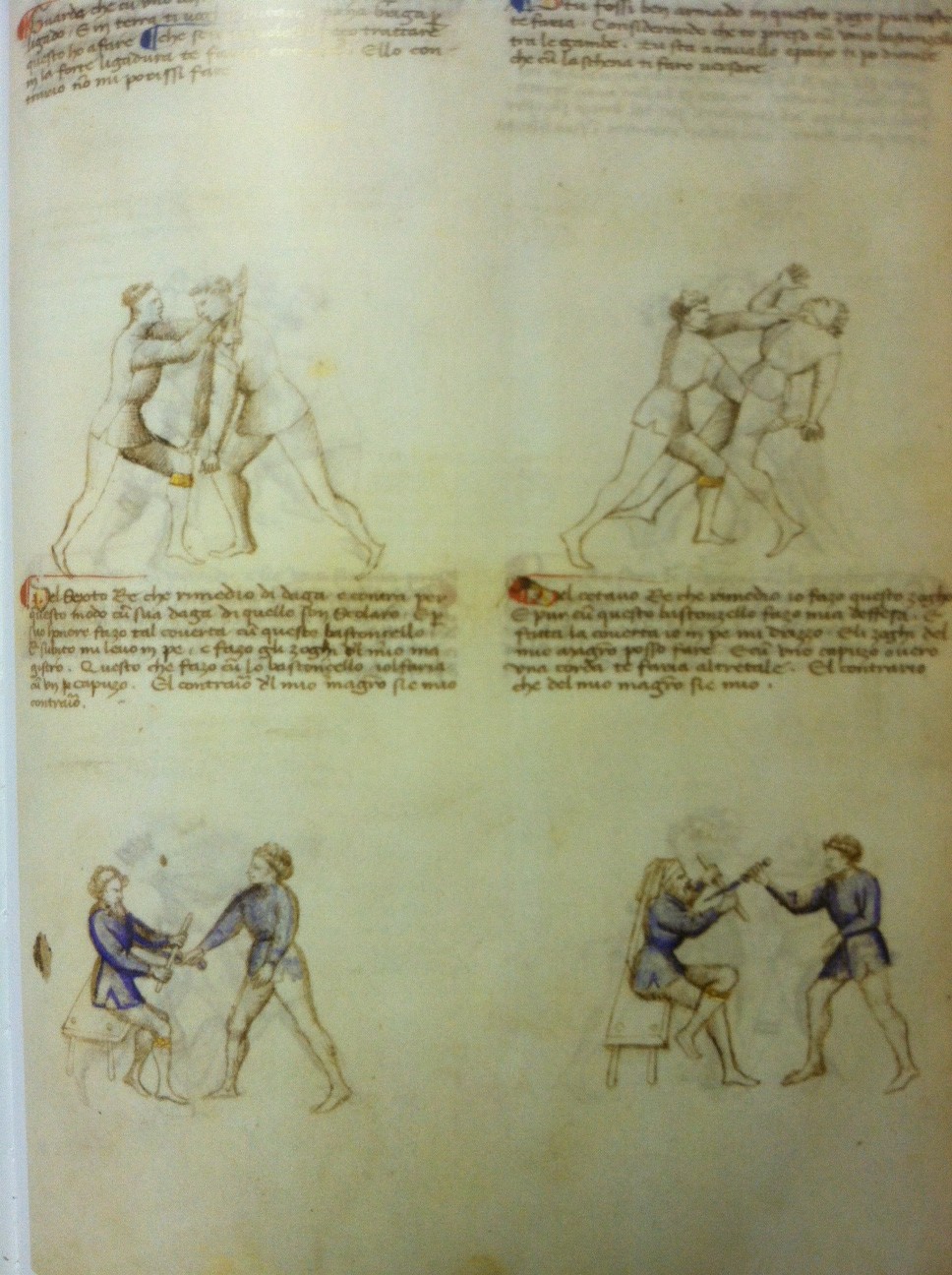It would be hard to determine if the stick or the rock was man’s first weapon, but it is apparent that the stick is still used as a weapon today. Similarly it was used in medieval Italy. Fiore shows a few plates where he explains the use of a stick for self defense. Fiore describes two different stick weapons he uses, a bastioncello and the club. The bastioncello is a little stick. The club, is a… well, a club. The Getty manuscript has a play where the master has a club in each hand, following the use of the staff and dagger. Finally there is the spear and the axe. These are staff weapons but they can show us how Fiore would employ weapons of similar size and striking ability.
Fiore gives us four plays in which he shows the uses of the short stick, which are two particularly advantageous grapples at the stick, and two ways to use a stick, hat , rope or other instrument of that length to defend using different masters of the dagger. Other than this, there is no other reference to the bastioncello.
 So how do you use a bastioncello i.e. a small stick?
So how do you use a bastioncello i.e. a small stick?
- According to Fiore, you use it to make advantageous grapples, in essence, you use it like an extension of your hand.
- But, you can use it like a dagger to defend. Conversely it can be carried and used to hit with the point both overhand and underhand like the dagger. Certainly not to the same advantage as a dagger, but getting a thrust in the face with a short stick doesn’t top my list of things to do today. A thrust to the solar plexus is far down the list as well. And from these thrusts arise advantageous grapples, such as the two that have been laid out for you.
- Does it haves sufficient weight to strike with? Well it can be used like a sword in one hand. Strikes to the temple, the elbow, or hand have a way of making an assailant a bit more pliable for those, you guessed it, advantageous grapples.
Fiore illustrates another play in which the master is beset by someone with a staff and he is holding two clubs, one in each hand. The left club is held low and across the body in a Coda Longa position, and the other is held in Posta di Donna. The master tells us to throw the right club at the opponents face while using the left club to sweep the attack by. He shows a picture of the master stabbing the assailant in the chest with the dagger (which I assume he has drawn from his side) while passing or blocking the staff with the left hand.
Interesting note: while delving into other aspects of my research I discovered that near the area of Italy that Fiore was from, came a group of naked warriors of (Germanic or Celtic in nature depending on the time period), that used a club and shield and were used to counter armored soldiers. They relied on the weight of their clubs and the protection given by the shield and mobility of being unencumbered to counter armored troops who were well protected against sharp weapons. These men were know to throw their clubs and then draw a secondary short sword (that was worn on the right) after delivering the club throw.
Could this technique be a throwback (pun intended) to that time?
The stick has not lost its effectiveness over time for dissuading an assailant, and the clubs that Fiore is packing look like they would do some serious damage, especially with the knots. The ragged staff has long been a heraldic charge and thus was well known. Perhaps the club was still a favored weapon of the region, but it was certainly in use by those who needed to defend themselves and couldn’t afford or obtain more effective weapons.

